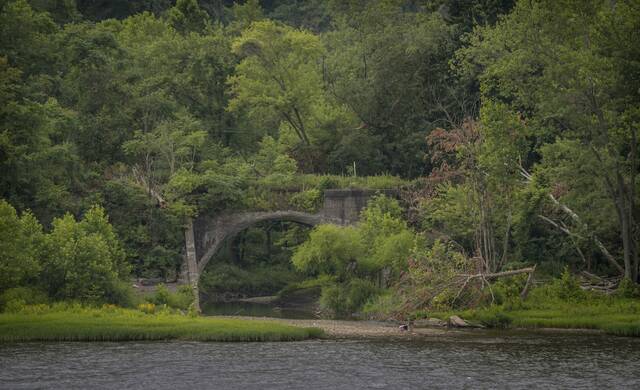Business owners dream of having a captive audience for their products.
But in the mid-18th century, a businessman had the Alle-Kiski Valley and much of Western Pennsylvania to himself.
Pierre (Peter) Chartier was a trapper who set up a fur trading post in 1734 near where Chartiers Run empties into the Allegheny River near the Braeburn section of Lower Burrell.
It’s across the river from ATI, which was known for many years as Allegheny Ludlum Steel.
Chartier brokered fur trade between the French, the British and the Shawnee, a Native American tribe. He was fluent in all three languages, helping his negotiating prowess.
After considerable success at his first location, Chartier moved his operation to what is now Tarentum, where Bull Creek meets the Allegheny River. He called it Chartiers Old Town.
His father, Martin Chartier, emigrated from France to Quebec (New France). The elder Chartier married Sewatha Straight Trail, a Shawnee.
Peter Chartier was born in 1690 along the Cumberland River in northern Tennessee.
Chartier married his first cousin, Blanceneige-Wapakonee Opessa. On Nov. 3, 1730, Chartier was licensed by the English Court in Lancaster County to trade with Native Americans in Southwestern Pennsylvania.
Related:
• Remember When: Tunnel under Allegheny River once carried coal from Plum to Springdale• Remember When: Proposed bridge in 1960s would have linked Freeport and Gilpin
• Remember When: Soon-to-be-demolished smokestak opened in 1970 at generating station in Springdale
The French controlled much of what is now known as Western Pennsylvania at the time Peter set up shop. He was not concerned about Native American attacks because he was married to a Native American.
This allowed Chartier to have carte blanche in the area until a dispute with the English Colonial government and its traders forced Chartier and his wife to leave Pennsylvania.
The dispute centered around the amount of rum that could be traded to the Native Americans, many of whom became dependent on that and other forms of liquor.
Embittered by the way he and his father were treated by the Colonial government, Chartier later returned to fight with the French in the French & Indian War against the British, including the Battle of Fort Necessity against George Washington’s forces.
Chartier and his wife died of smallpox in 1760 in Old Shawneetown, Ill., along the Wabash River.
Today, Chartiers Run begins in Upper Burrell Township and flows through Allegheny Township along Melwood Road, through Officer Derek Kotecki Memorial Park in Lower Burrell before reaching the Allegheny River.
Besides Chartiers Run, Chartiers Creek, which starts in Washington County and flows north to the Ohio River near McKees Rocks, was named after him, along with Chartiers Township in Washington County.
Two school districts are named after him: Chartiers Valley in Allegheny County and Chartiers-Houston in Washington County.











